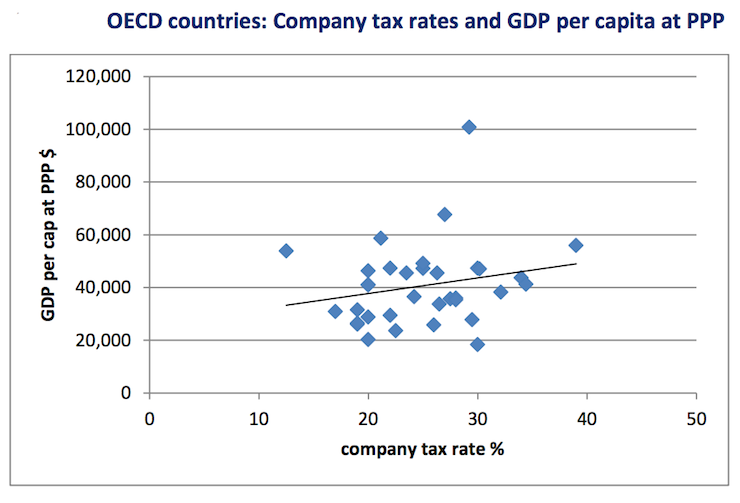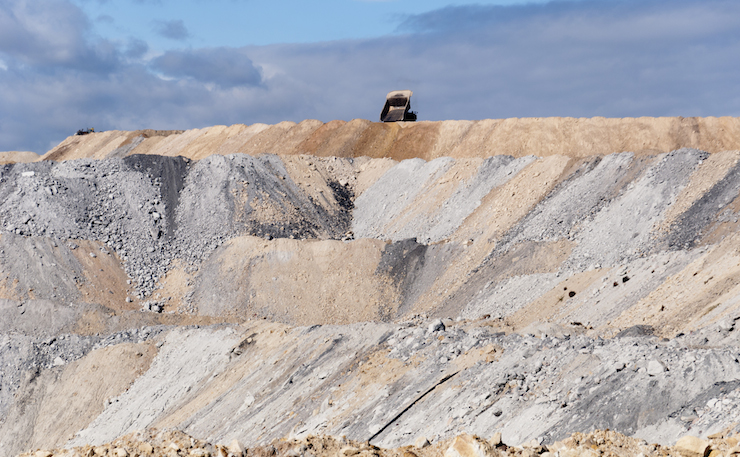Facts were the first casualty in some Minerals Council spin around the 2016-17 budget. Rod Campbell calls them out.
The mornings are crisp, the afternoons are warm and the leaves are changing colour on the trees. Ah, yes, it’s budget time in Canberra!
Our friends at the Minerals Council of Australia are getting into the spirit of the season.
They’ve put out a two pager this week on how much tax the mining industry pays. It points to a statement from the Australian Tax Office’s Second Commissioner, underlining that “it’s important to have a debate, but even more important to do so with ‘facts’, not ‘myths’.
Note the scare-quotes: “facts” are different to facts. “Facts” are like myths but with more truthiness. Normal facts, however, contain truth and not just truthiness.
The Minerals Council need “facts” these days because their favourite myths – like clean coal and the NSW gas shortage – have been thoroughly debunked and mythbusted.
So the Minerals Council are using “facts”, because facts just don’t work for them, as one of their members, Toro Energy, has pointed out:
“Fighting with fact and science doesn’t cut it… connecting to people’s hearts and feelings and their own sense of control [is needed]as opposed to fighting with fact and science.”
So leaving facts and myths aside, let’s get into the “facts” that the Minerals Council have put out.
“Fact” 1 – Mining pays its way
“Federal company tax and state royalties alone from the minerals industry amounted to $165 billion in the decade to 2014-15.”
$165 billion!? Whoa, that sounds like a lot of money!
And it is if you find it down the back of the couch. But $165 billion is not a lot for Australian governments over 10 years.
In the decade to 2014-15 the Commonwealth Government alone pulled in $3.153 TRILLION dollars. So mining’s $165 billion contribution to that is around 5 per cent.
But wait, there’s more! The $165 billion includes state royalties so we need to consider the state’s revenue raising as well. In 2013-14 the states’ own sources of revenue added another $120 billion to the $374 billion (pg 30) raised by the Commonwealth. Depending on the year mining contributes between 2 and 5 percent of all governments’ revenue (I won’t link to all budget papers here, but contact me if you want to see the workings).
What does this mean? It means that around 97 percent of the schools, hospitals and public transport we use are not paid for by the mining industry. They’re paid for by the rest of us.
Get the latest Tax Facts: https://t.co/pzm799SkVH #mining pic.twitter.com/qhQALB5Ged
— MineralsCouncilAust (@MineralsCouncil) April 8, 2016
“Fact” 2 – Mining companies are leaders in tax transparency
“Transparency International has consistently ranked BHP Billiton and Rio Tinto (Australia’s two biggest miners) near the top of its global rankings on corporate reporting transparency.”
“Near the top” is a nice way of making a “fact” out of the fact that Transparency International gave BHP and Rio grades of 69% and 50% respectively for organisational transparency (Page 23). Both companies came under serious fire last year during the senate inquiry into corporate tax avoidance for their use of off-shore marketing hubs to avoid Australian tax.
Credit where it’s due though – BHP and Rio are more transparent than the Minerals Council’s other members. Adani, for example, were asked in court last year about their entities in the tax haven of Mauritius:
Barrister: What does Adani Global Private Limited in Mauritius do?
Rajesh Gupta, Financial Controller, Adani Mining: I don’t know about – I don’t have any idea about it.
Barrister: That’s your answer under oath?
Gupta: —Yep
How’s that for leading in tax transparency?!
In case some readers aren’t as excited by mining tax facts as I am, let’s skip “fact” 3 and go to…
“Fact” 4 – Australia’s corporate tax system is increasingly uncompetitive
This “fact” is pure econobabble. All it means in plain English is “mining companies want to pay less tax”.
Which is fine, if you’re a mining company. For the rest of us, lowering corporate tax rates isn’t a good idea at all. Looking across OECD countries, there is no evidence to show that lower corporate tax leads to higher economic growth.
Furthermore, countries with higher corporate tax rates tend to have higher GDP per capita. In the graph below, each dot represents an OECD country. The axes show GDP per capita and the corporate tax rate:

Note that the trend line drawn on the graph shows a fairly strong positive relationship between company tax rates and income.
What this means is that as far as your average citizen is concerned, Australia’s corporate tax system is quite competitive indeed. The Minerals Council’s claims are largely based on a paper they commissioned, which was quickly debunked on Crikey.
As the days grow shorter in Canberra and both the budget and the election approaches, you can expect to see a lot more “facts” coming out about tax and mining.
Just remember that during this season if something sounds silly, it probably is.
Donate To New Matilda
New Matilda is a small, independent media outlet. We survive through reader contributions, and never losing a lawsuit. If you got something from this article, giving something back helps us to continue speaking truth to power. Every little bit counts.





